
An academic research lab in Georgia Institute of Technology

This research group consists of graduate students in electrical engineering and robotics under the supervision of Dr. Fumin Zhang at the Georgia Institute of Technology. A few areas of research in which our group is actively engaged are bio-inspired autonomy, human-robot interaction, autonomous underwater vehicles, mobile sensing networks, and cyber-physical systems.
Office of Naval Research, National Science Foundation, U.S. Naval Research Laboratory, National Oceanic and Atmospheric Administration
The Georgia Tech Miniature Autonomous Blimp (GT-MAB) is developed as an indoor testbed for robotics research. Compared with existing platforms, the GT-MAB features longer flight times and safer human-robot interactions. The influence of aerodynamics on the blimp is significant and must be considered to achieve autonomous flying behaviors. We identified the mathematical model and designed controller for the GT-MAB, which leads to a set of motion primitives that can be combined for autonomous waypoint-following. Because of the accurate controller, GT-MAB can fly safely in close proximity to humans. It is able to detect the face of a human subject, follow the human and recognize hand gestures. Because of these functionalities, a human user can interact with GT-MAB without any additional tracking device.
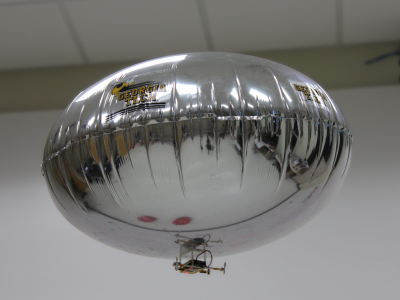
Georgia Tech Miniature Autonomous Blimp
Our omnidirectional surface vehicle (OSV) is developed with the purpose of facilitating efficient aquaculture infrastructure inspection. Unique design of the OSV assures outstanding maneuverability, payload expandability, and damage redundancy in aquaculture sites. The convenient features of the OSV significantly reduce the time for building, operating and maintaining the vehicle. The OSV can be easily operated by one person with laptops or smartphones. Moreover, the OSV has strong onboard processing power. A generic x86 onboard computer provides outstanding compatibility for various devices and software, while a discrete neural network accelerator hardware significantly speeds up the image processing.
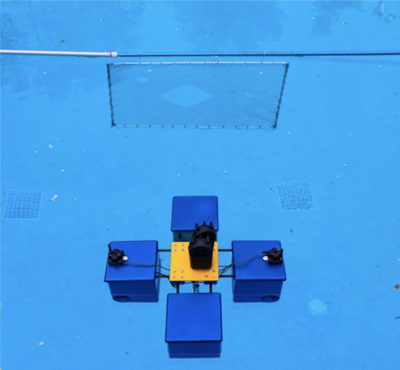
Omnidirectional surface vehicle top view
Despite the OSV is designed for aquaculture inspection, the vehicle is also capable of supporting various tasks. Commercial applications including environmental monitoring, submerged infrastructure inspection, and diver’s companion are highly expected. The OSV is also competent as a testbed for scientific research, and as an educational platform for marine robotics.
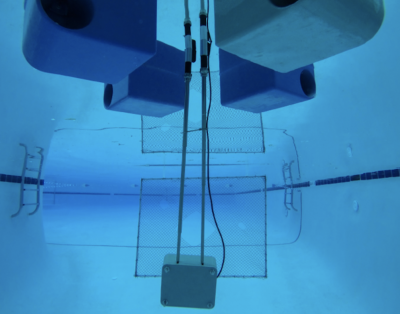
Underwater view of omnidirectional surface vehicle
In collaboration with Dr. Catherine Edwards at Skidaway Institute of Oceanography, we develop methods for efficient navigation of underwater gliders, which are low-speed robust sensor platforms suitable for long-duration ocean sampling deployments. We have developed a method for real-time guidance of gliders using predictive ocean models, and our methods have been tested in field deployments in 2012 and 2013 off the coast of Long Bay, South Carolina—a region with strong tidal and Gulf Stream currents.
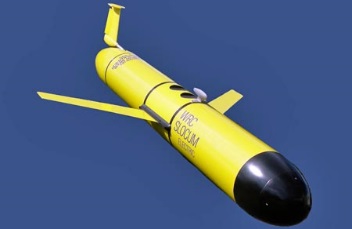
Underwater Glider

Long Bay glider deployment
Long Bay glider deployment Techniques like Controlled Lagrangian Particle Tracking (CLPT) have been developed to quantify the effects of error in ocean models on a path planned for a glider. Large errors in the model flow can invalidate path planning efforts. In the simulation below, different regions of the flow have a different background color. Each color shows a finite-time Lyapunov exponent, which quantifies the amount of “stretching” between particles freely advected by the flow.
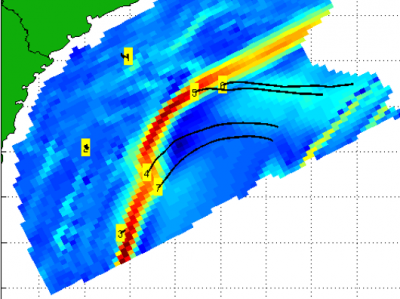
Controlled Lagrangian particle tracking simulation
Our contribution to the efficient navigation of gliders continued in Gliderpalooza 2013, a collaborative ocean-survey experiment. Data collected from the experiments will create a coastal continental scale data set supporting goals like improved hurricane forecasts.
A year after the Deepwater Horizon oil spill, we carried out collaborative autonomous oil sampling, and depth mapping experiments in a coastal lagoon in Grand Isle, Louisiana.
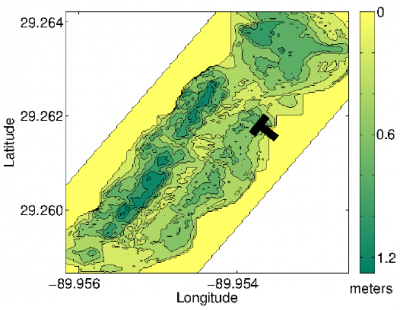
Depth map created using data collected by a survey vehicle during multiple missions
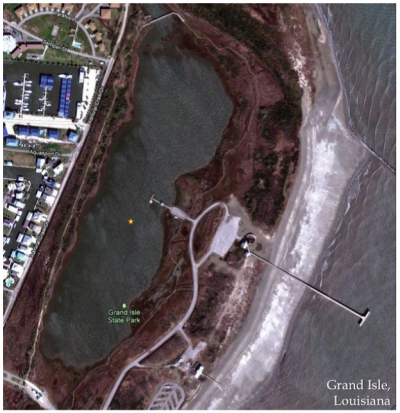
Satellite image of the lagoon that was the site of the survey
Central to our environmental sensing efforts were two student-built robot platforms, autonomous surface vehicle (ASV) Victoria and remotely operated vehicle (ROV) Beta, developed and built by an interdisciplinary team of graduate and undergraduate students over a period of several years.

ROV Beta
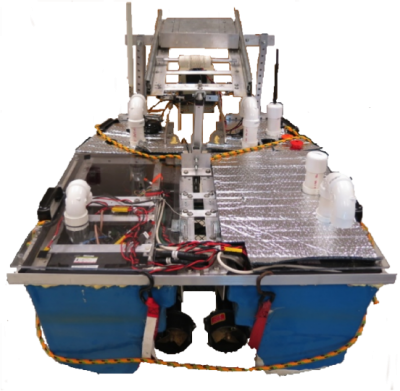
Closeup ASV Victoria’s systems
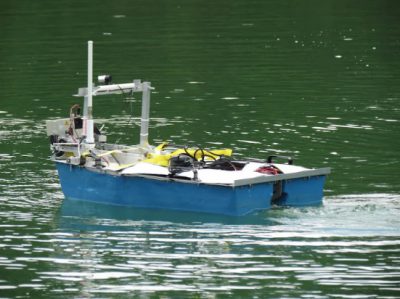
ASV Victoria in action
This work focuses on developing approximated methods for modeling and estimating ocean currents to guide autonomous underwater vehicles more effectively. Glider CT can be viewed as analogous to CT scanning in medical imagery, where instead of reconstructing a cross-sectional image from X-rays passing through varying density tissue in the body, we produce a map of ocean currents from underwater gliders passing through varying current flows. For the experimental setup, we navigate Khepera III robots in a simulated flow field created by a light source, where light intensity measured by each robot corresponds to horizontal flow velocity. After collecting navigation data from the Khepera III robots, we reconstruct the simulated flow field from the trajectories of the robots by running the Motion Tomography algorithm.
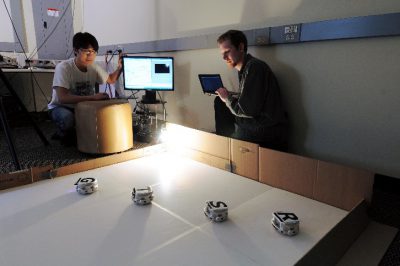
Khepera III robots drive across a light field in a lab experiment
Our group is actively involved with Georgia Tech’s Vertically Integrated Program (VIP), which connects undergraduate students with ongoing research projects in a team-based environment. Through this program we are able to develop reliable and imaginative robotic platforms that support our existing research, inspire the student teams through hands-on experience, and even supply some new ideas for the future of our program.
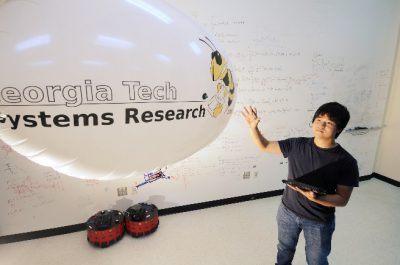
Undergrad Phillip Cheng tests the custom wireless control system he designed for blimps